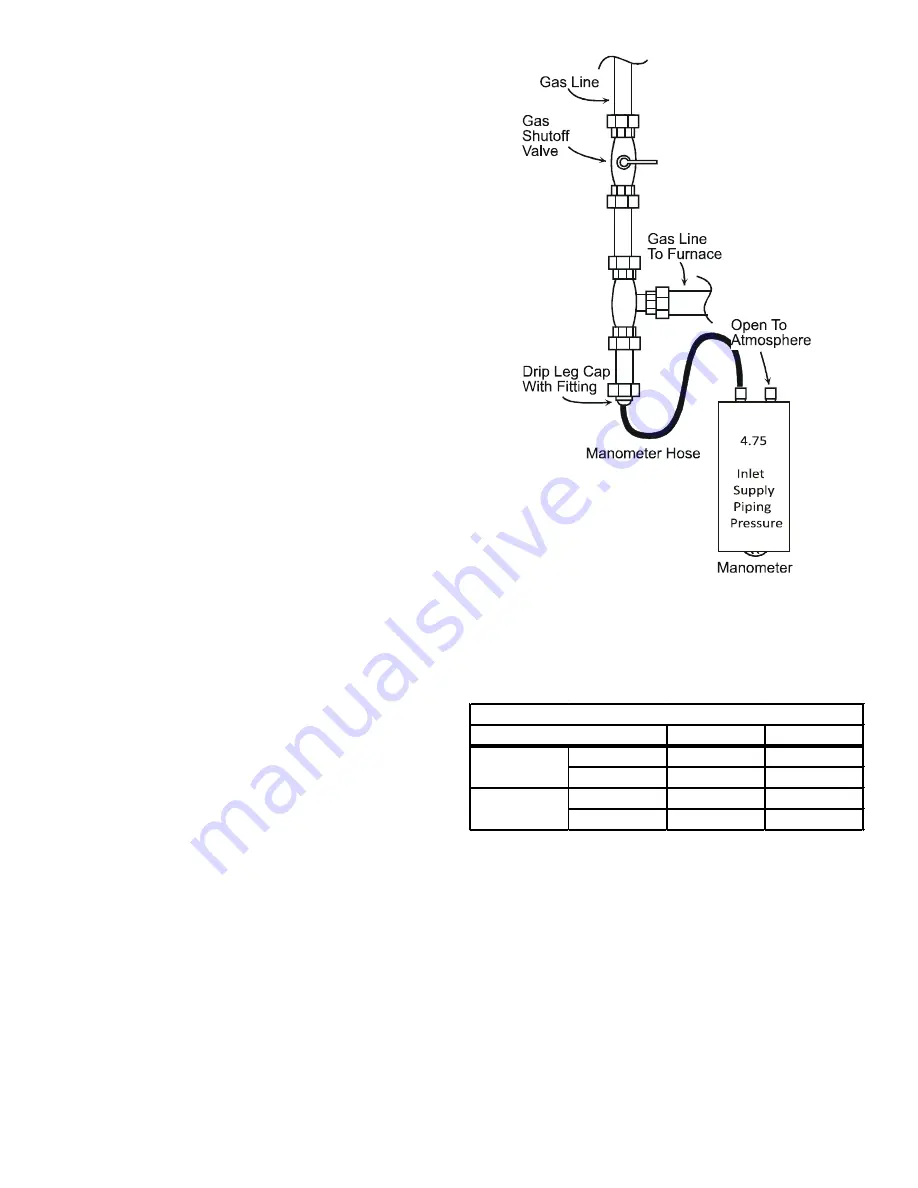
42
M
easurIng
I
nlet
g
as
P
ressure
(
alt
.
MetHoD
)
f
Igure
63
note: w
Hen
conVertIng
froM
natural
gas
to
l.P.
consult
Your
DIstrIButor
for
ProPer
conVersIon
kIt
.
Range
Nominal
Low Stage 1.6 - 2.2" w .c.
1.9" w .c.
High Stage 3.2 - 3.8" w .c.
3.5" w .c.
Low Stage 5.7 - 6.3" w .c.
6.0" w .c.
High Stage 9.7 - 10.3" w .c. 10.0" w .c.
Manifold Gas Pressure
Gas
Natural
Propane
g
as
I
nPut
r
ate
M
easureMent
(n
atural
g
as
o
nlY
)
The actual gas input rate to the furnace must never be
greater than that specified on the unit rating plate. To
measure natural gas input using the gas meter, use the
following procedure.
1. Turn OFF the gas supply to all other gas-burning
appliances except the furnace.
2.
While the furnace is operating at high fire rate, time
and record one complete revolution of the gas meter
dial, measuring the smallest quantity, usually the dial
that indicates 1/2 cu. ft. per revolution. You will use
this number to calculate the quantity of gas in cubic ft.
if the furnace would consume if it ran steadily for one
hour (3600 seconds).
Only small variations in gas pressure should be made by
adjusting the gas valve pressure regulator. The manifold
pressure must be measured with the burners operating.
To measure and adjust the manifold pressure, use the
following procedure.
1. Turn OFF gas to furnace at the manual gas shutoff
valve external to the furnace.
2. Turn off all electrical power to the system.
3.
Outlet pressure tap connections:
White-Rodgers 36J54 valve: Back outlet pressure
test screw (inlet/outlet pressure tap) out one turn
(counterclockwise, not more than one turn).
4. Attach a hose and manometer to outlet pressure tap .
5. Turn ON the gas supply.
note: f
ollow
tHIs
ProceDure
to
test
tHe
gas
ValVe
Pressure
at
100%
fIrIng
rate
.
r
un
H
IgH
f
Ire
note:
tHe
c
ool
c
louD
PHone
aPPlIcatIon
Be
useD
to
assIst
wItH
all
functIonal
tests
. s
ee
tHe
quIck
start
guIDe
sectIon
for
DetaIls
.
The furnace should be inspected by a qualified installer, or
service agency at least once per year. This check should
be performed at the beginning of the heating season.
This will ensure that all furnace components are in proper
working order and that the heating system functions
appropriately. Pay particular attention to the following
items. Repair or service as necessary.















































